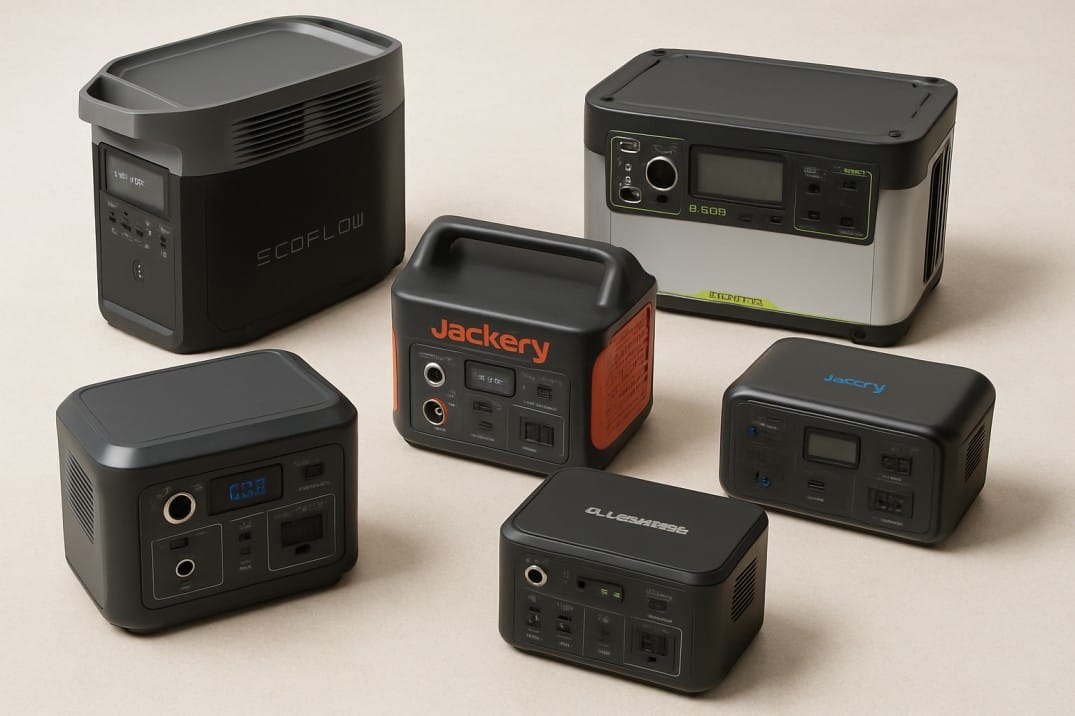Portable Power Stations for Camping
Table of Contents
Introduction
Why Portable Power Stations Matter in 2025
How to Choose the Right Unit
The Top 7 Models for 2025
Real-World Use Cases
Maintenance & Longevity Tips
FAQs
Conclusion & CTA
1. Introduction
Whether you’re escaping to the backcountry, living van-life, or preparing for the next power outage, a portable power station is your best ally in 2025. These compact yet powerful devices replace noisy gas generators, providing clean, silent energy to charge phones, laptops, mini-fridges, medical devices, and more.
With weather-related disasters and grid blackouts on the rise, portable power is no longer a luxury—it’s essential survival gear.
2. Why Portable Power Stations Matter in 2025
Eco-friendly energy: Lithium-iron and solar-ready batteries eliminate fumes and fuel costs.
Silent operation: Ideal for stealth camping or indoor emergency use.
Grid independence: Power up anywhere—campsite, RV, or disaster shelter.
3. How to Choose the Right Portable Power Station
| Key Feature | What It Means | Why It Matters |
|---|---|---|
| Capacity (Wh) | Total stored energy | More Wh = longer runtime |
| Output (W) | Continuous power draw | Must exceed device needs |
| Battery Type | Li-ion / LiFePO₄ | Affects lifespan & safety |
| Recharge Options | AC / Car / Solar | Solar adds off-grid value |
| Portability | Weight & handles | Critical for campers on foot |
4. Top 7 Portable Power Stations for Camping & Emergencies in 2025
Below are seven of the most searched and reviewed models on Amazon U.S.
Capacity: ~2 kWh
Output: 2400 W AC / 30 min fast charge
Solar Input: Up to 500 W
Best For: RV travel and whole-day camp setups
Pros: Fastest charging in class | Expandable battery
Cons: Heavier (40 lb+)
👉 Check Price on Amazon
Capacity: 1516 Wh
Ports: AC / USB-C / 12 V
Best For: Emergency home backup or long basecamps
Pros: Durable build | Solar panel ready
Cons: Premium pricing
👉 Check Price on Amazon
Capacity: 288 Wh
Weight: 8 lb
Best For: Weekend trips / light camping
Pros: Lightweight | Affordable | Quick charge
Cons: Not for heavy devices
👉 Check Price on Amazon
Capacity: 3840 Wh (Expandable)
Output: 6000 W peak
Best For: Whole-house backup or large RVs
Pros: Extreme capacity | App monitoring
Cons: High cost | Heavy
👉 Check Price on Amazon
Capacity: 2048 Wh (Expandable to 8192 Wh)
Output: 2200 W AC
Best For: Prolonged off-grid living
Pros: LiFePO₄ battery | Long cycle life (3500+)
Cons: Bulky
👉 Check Price on Amazon
Capacity: 768 Wh
Best For: Solo campers & bug-out bags
Pros: Charges to 80% in 70 min | Compact
Cons: Limited AC ports
👉 Check Price on Amazon
Capacity: 299 Wh
Weight: 7 lb
Best For: Budget shoppers & EDC use
Pros: Affordable | Solar input | App control
Cons: Shorter lifespan
👉 Check Price on Amazon

📊 Quick Comparison Table
| Model | Capacity (Wh) | Weight (lb) | Solar Input | Best Use | Price Range |
|---|---|---|---|---|---|
| EcoFlow Delta 3 Plus | 2048 | 43 | Yes | RV / Backup | $$$ |
| Yeti 1500X | 1516 | 45 | Yes | Basecamp | $$ |
| Jackery 300 Plus | 288 | 8 | Yes | Light Trips | $ |
| Anker F3800 | 3840 | 60 | Yes | Home Backup | $$$$ |
| Bluetti AC200 MAX | 2048 | 62 | Yes | Off-Grid | $$$ |
| EcoFlow River 2 Pro | 768 | 17 | Yes | Bug-Out | $$ |
| ALLPOWERS R600 | 299 | 7 | Yes | Budget | $ |
5. Real-World Use Cases
A. Off-Grid Camping
Power your lights, drones, and camera gear without noise pollution.
B. Emergency Blackouts
Run essential devices: routers, medical machines, mini-fridges.
C. Van-Life & RV Trips
Combine solar panels + inverter to live indefinitely off-grid.
D. Small Businesses & Events
Keep POS systems and lighting active during outages.
6. Maintenance & Longevity Tips
Store at 50-60% charge if unused for months.
Cycle the battery monthly to preserve capacity.
Avoid heat > 90°F / 32°C.
Use LiFePO₄ models for longer life and fire safety.
Clean ports and check cables before every trip.
7. FAQs
Q1. What size power station do I need for a weekend camping trip?
A unit between 500 Wh and 1000 Wh is ideal to charge phones, lights, and small appliances.
Q2. Can portable power stations run a fridge during a blackout?
Yes—choose ≥ 1000 W continuous output and 1500 Wh+ capacity for 3–5 hours runtime.
Q3. Are they safe indoors?
Absolutely. They produce no CO₂ and are safe for apartments and emergency shelters.
Q4. Can I charge them with solar panels?
All models listed support solar charging; just match panel wattage and connector type.
Q5. How long do portable power stations last?
Li-ion: 500–800 cycles. LiFePO₄: 3000–5000 cycles (8–10 years typical).
8. Conclusion & CTA
In 2025, owning a portable power station is no longer optional—it’s a core part of any survival kit and off-grid lifestyle.
👉 Be ready for anything—from storm blackouts to mountain adventures.
Explore the recommended models above and Check Price on Amazon to find the best deal today.
(Read More: Best Inflatable Camping Tents & Power Stations for Your Next Off-Grid Adventure)
(External link: CDC Emergency Preparedness Tips)






